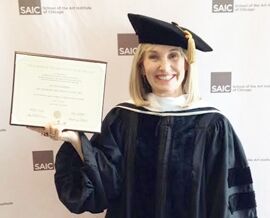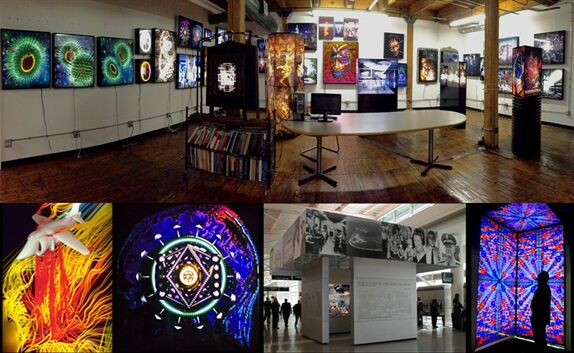
Art(n) Tech

by Troy Pieper (MA 2015)
In 1975, Ellen Sandor received an MFA in Sculpture from SAIC. Thirty-nine years later, the accomplished artist and longtime friend of the School received an honorary doctorate at SAIC’s Commencement Ceremony. Sandor’s journey as an artist has crossed diverse territory, from sculpture to photography, from collector to philanthropist, and from innovator to founder of a successful studio.
In addition to sculpture, Sandor always had a passion for photography, and along with her husband, Dr. Richard Sandor, began collecting following her studies at SAIC. The interest bled into her practice, and she started making photographic and neon sculptures. In 1981 she received a commission to make a 3D postcard; two years later, this evolved into a large-scale, proto-virtual reality immersive environment. Exhibited as a series of 3D photographic backlit murals, they made holographic images visible without 3D glasses. It was then that she coined the term “PHSCologram” (pronounced “Skologram"), the technique for which she is probably best known. It's an acronym, she says, for “photography, holography, sculpture, and computer graphics.”

In the years that followed, Sandor worked with the Electronic Visualization Laboratory, a research lab at the University of Illinois at Chicago that brings together faculty and students from that school’s Art and Computer Science departments to work with computer graphics, high-performance computer networking, and technological art. That work allowed her to turn PHSColograms into an all-digital process. She also worked with the National Center for Supercomputing Applications at the University of Illinois at Urbana-Champaign, and it was not long before Sandor realized that “one day everything would be digital, and that old forms could become something new.”
